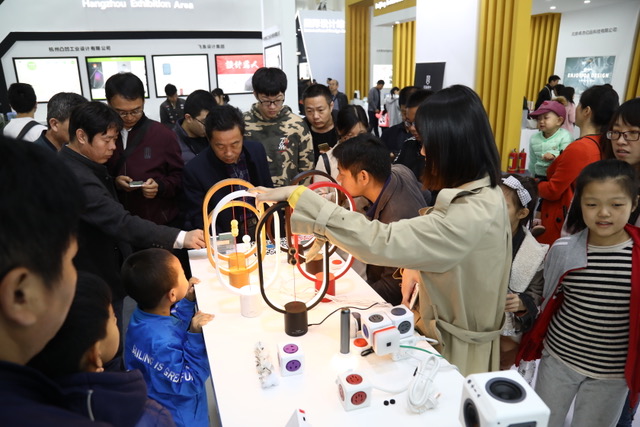Chinese city of the future wants collaboration with Design Museum

Xiongan. One feels dizzy before the large video screen in the exhibition space. It’s as big as a house, and the visions in the video are equally impressive. Moderately sized houses stand by a channel, pedestrians walk on spacious lanes, and electric public transport takes citizens from one place to another. The city is green and smart.
This is what future will look in Xiongan, an area located in the province of Hebei, 130 kilometres from Beijing.
The Xiongan development is the most significant infrastructure initiative of this millennium in China. Design, ecology and human interest are very much involved in the planning.
By 2035, Xiongan shall be a special economic area just like Shenzhen built in the 1980s is in South China. This “New Silicon Valley” will be built to meet human needs and follow sustainable principles. No more than one third of the area will be built. A large lake district nearby is to be cleaned and forest added by 30 per cent. Some 250,000 new trees have already been planted in the area. According to the developers, its architecture will combine traditional Chinese elements with western features and quality.
This giant project started last year and is a favourite of President of China Xi Jinping, so it is likely to be completed.
Related to the development, the area hosted the first Hebei International Industrial Design Week last week. Its organizer, Shenzhen’s industrial design association SIDA, wanted Finland to be visibly present during the event. On the Finland Day, design and architecture professionals spoke at the seminar, and the exhibition included ED-Design, Private Case and Iittala in addition to Chinese companies. One of the exhibitors was Shi.F. that represents furniture designed by Yrjö Kukkapuro and manufactured by Shanghai Avarte in China. The companies were invited to participate in the event without cost.
Design Museum signed a memorandum of understanding regarding collaboration with the Xiongan regional authority. A design museum is planned for the area, and if completed, the Helsinki Design Museum is to play a major role as a consultant.
A memorandum of understanding is a common way to advance projects in China.
The country houses few design museums and therefore lacks relevant experience. Buying knowhow from the Finnish Design Museum can help.
SIDA representatives have visited Finland and Design Museum. Discussions started last year, and Design Museum Director Jukka Savolainen talked to Xiongan’s Mayor last spring. The Mayor suggested collaboration.
“There is great interest towards Finnish design in China. The country wants to be a super power of design and is proceeding in this objective. If we can import Nordic design and wellbeing-thinking here, it will benefit all,” Savolainen says.
In other words Finnish design, designers and companies may have great opportunities in the Xiongan area in the future. The point is to utilize these opportunities. Based on the Hebei design week and the local developers’ keynotes, there is great interest towards Finland at the moment.
For example, the people in China appreciate the way industrial design has been integrated into Finnish companies. There is plenty of traditional pollutant industry around the Hebei area and a will to renew and change the situation with more design.
According to Savolainen Finns better be ready for action.
“This project is at an early stage, and it is difficult to say which are the best ways to participate, but we should participate as a wide front. Finns are known to be careful, and things move quickly in China. If we don’t take the necessary steps, we’re likely to lose the opportunity. The Swedes or the Danes or someone else will come and roll right past us.”
Major Finnish companies, such as Iittala and Rovio, have experience in the Chinese market, and they understand the operating logic, but many other companies need help in such a different environment.
Savolainen misses dialogue among all relevant parties, including the City of Helsinki and the Finnish government.
“We could establish a joint vision on how Finland can contribute. China wants to deal with an official counterpart.”